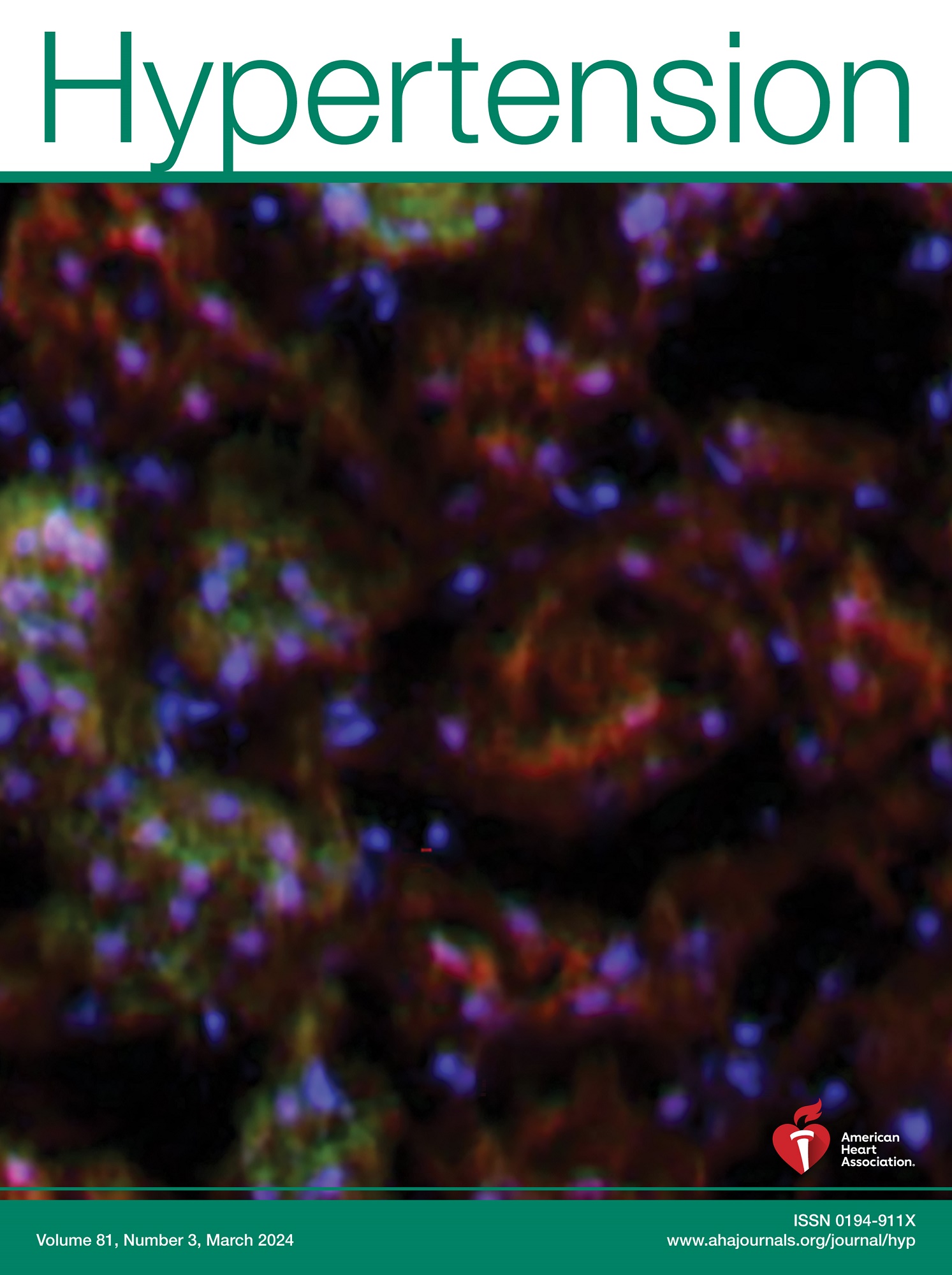子宫内膜异位症患者血压反射的改变。
IF 8.2
1区 医学
Q1 PERIPHERAL VASCULAR DISEASE
引用次数: 0
摘要
背景子宫内膜异位症是心血管疾病的危险因素。COX(环氧合酶)在子宫内膜异位症病变中上调,可能会增加压力反射,这是不良心血管事件的主要危险因素。本研究的目的是确定患有子宫内膜异位症的妇女是否表现出夸大的升压反应。我们假设子宫内膜异位症女性在握力锻炼和冷压试验(CPT)中表现出比健康女性更高的血压。方法采用单盲、随机、交叉试验设计,女性(Endo;n=11),无(HC;n=9)子宫内膜异位症在服用阿司匹林(一种非选择性COX抑制剂;650毫克)或安慰剂。在基线(5分钟)和手浸泡(3分钟)期间连续监测血压;4-8°C),基线(5分钟),30%最大自愿收缩的握法(2分钟),运动后缺血的握法(3分钟)。结果子宫内膜异位症患者对CPT的降压反应减弱(∆MAP Endo 21±16 vs HC 34±20 mm Hg;P<0.01)和握力与运动后缺血(握力/运动后缺血:ΔMAP Endo=12±13/13±10 mm Hg, HC=24±14/20±8 mm Hg;P < 0.01)。阿司匹林对CPT或握力对运动后缺血的血压反应没有影响。结论:与年龄匹配的HC相比,子宫内膜异位症女性在冷暴露和运动后血压升高较低。阿司匹林,一种COX抑制剂,对这些反应没有影响。总的来说,这些结果表明患有子宫内膜异位症的女性表现出中枢整合改变,交感神经流出和终末器官反应减弱。本文章由计算机程序翻译,如有差异,请以英文原文为准。
Altered Blood Pressure Reflexes in Women With Endometriosis.
BACKGROUND
Endometriosis is a risk factor for cardiovascular disease. COX (Cyclooxygenase) is upregulated in endometriotic lesions, potentially exaggerating pressor reflexes, a major risk factor for adverse cardiovascular events. The purpose of this study was to determine whether women with endometriosis demonstrate exaggerated pressor responses. We hypothesized that women with endometriosis would show exaggerated BP compared with healthy women during handgrip exercise and cold pressor testing (CPT).
METHODS
In a single-blind, randomized, crossover design, women with (Endo ; n=11) and without (HC; n=9) endometriosis underwent a CPT and handgrip with postexercise ischemia following aspirin (a nonselective COX inhibitor; 650 mg) or placebo. Blood pressure was continuously monitored during baseline (5 minutes) and hand submersion (3 minutes; 4-8 °C) during CPT, and during baseline (5 minutes), 30% maximal voluntary contraction handgrip (2 minutes), and postexercise ischemia (3 minutes) for handgrip with postexercise ischemia.
RESULTS
Women with endometriosis demonstrated attenuated pressor responses to CPT (∆MAP Endo 21±16 versus HC 34±20 mm Hg; P<0.01) and handgrip with postexercise ischemia (handgrip/postexercise ischemia: ΔMAP Endo=12±13/13±10 mm Hg, HC=24±14/20±8 mm Hg; P<0.01). There was no effect of aspirin on blood pressure response to either CPT or handgrip with postexercise ischemia.
CONCLUSIONS
Compared with age-matched HC, women with endometriosis demonstrate lower increases in blood pressure in response to cold exposure and exercise. Aspirin, a COX inhibitor, had no impact on these responses. Collectively, these results suggest that women with endometriosis demonstrate altered central integration and attenuated sympathetic outflow and end-organ responsiveness.
求助全文
通过发布文献求助,成功后即可免费获取论文全文。
去求助
来源期刊

Hypertension
医学-外周血管病
CiteScore
15.90
自引率
4.80%
发文量
1006
审稿时长
1 months
期刊介绍:
Hypertension presents top-tier articles on high blood pressure in each monthly release. These articles delve into basic science, clinical treatment, and prevention of hypertension and associated cardiovascular, metabolic, and renal conditions. Renowned for their lasting significance, these papers contribute to advancing our understanding and management of hypertension-related issues.
 求助内容:
求助内容: 应助结果提醒方式:
应助结果提醒方式:


